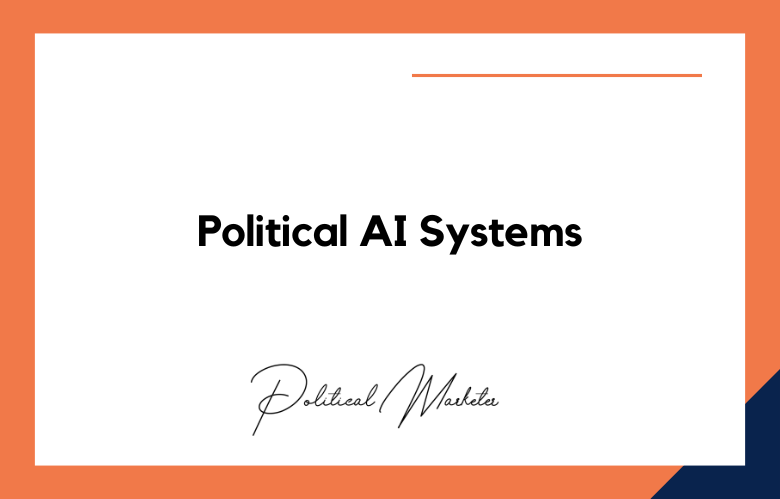In the fast-paced world of political campaigning, where every interaction can sway public opinion, marketing automation has emerged as a game-changer. Political marketing automation harnesses the power of technology to streamline, automate, and optimize marketing tasks and workflows, ensuring that campaigns can engage with voters more efficiently and effectively than ever before.
How to Use Political Marketing Automation
This strategic integration of automation technologies into the political arena enables campaigns to deliver personalized messages at scale, track voter interactions in real-time, and adapt strategies based on actionable insights, all while maximizing the use of limited resources.
The essence of using political marketing automation lies in its ability to foster more meaningful connections with the electorate. By automating repetitive tasks such as email campaigns, social media posts, and voter segmentation, political teams can focus on crafting compelling narratives and strategic initiatives that resonate deeply with their target audience. Automation tools also provide the capability to analyze vast amounts of data, from voter demographics to engagement metrics, offering a nuanced understanding of the electorate’s preferences, concerns, and motivations.
As we delve into the intricacies of political marketing automation, it’s essential to recognize that its success hinges on a delicate balance between personalization and automation. The goal is to leverage technology to enhance human interaction, not replace it, ensuring that each voter feels heard, valued, and engaged.
From automating voter outreach to optimizing campaign operations, political marketing automation opens up a world of possibilities for campaigns to innovate, connect, and, ultimately, influence the course of political discourse.
Automating Your Political Strategy: A Guide to Political Marketing Automation
Political marketing automation uses software and technology to automate and streamline various aspects of a political campaign’s marketing efforts. By automating repetitive tasks, segmenting audiences, personalizing messaging, and tracking and analyzing data, campaigns can work more efficiently, engage more effectively with voters, and make data-driven decisions to optimize their strategy.
Here’s a guide to political marketing automation:
Identify your goals and target audience.
Before implementing marketing automation, you must clearly understand your campaign’s goals and target audience. This will help you determine which automation tools and strategies best suit your needs.
Choose the right automation tools.
Various political marketing automation tools are available, each with features and capabilities. Choose a tool that aligns with your campaign’s goals, budget, and technical expertise.
Automate email campaigns
Email marketing is a critical component of any political campaign. Use automation to create and send personalized emails to segmented lists of voters, track open and click-through rates, and adjust your messaging based on performance metrics.
Automate social media efforts
Social media is a powerful tool for political campaigns, but it can be time-consuming to manage. Use automation to schedule posts, track engagement, and analyze performance metrics across various social media platforms.
Automate digital advertising
Digital advertising is a cost-effective way to reach a large audience, but managing multiple campaigns can be complex. Use automation to create, place, and optimize digital ads across various platforms and track their real-time performance.
Automate data analysis
Data is the lifeblood of any political campaign. Use automation to collect, analyze, and visualize data from various sources, such as website traffic, social media engagement, and advertising performance, to gain insights and optimize your strategy.
Measure and adjust
Use automation to track the performance of your political marketing efforts and adjust your strategy as needed. Continuously monitoring and optimizing your campaigns will help you achieve better results and stay ahead of the competition.
By following these steps, political campaigns can harness the power of automation to streamline their marketing efforts, reach more voters, and achieve their goals.
Maximizing Your Campaign Impact with Political Marketing Automation
Maximizing the impact of your campaign through political marketing automation involves leveraging technology to streamline operations, personalize voter outreach, and optimize engagement strategies. This approach enables political campaigns to allocate resources efficiently, ensuring their message reaches a broad audience and resonates personally with individual voters.
Streamlining Your Political Messaging with Automation Tools
Political campaigns are complex and fast-paced, with multiple messaging channels and audiences to manage. Fortunately, automation tools can help streamline and optimize your political messaging, saving time and resources while improving engagement with voters.
Email Marketing Automation
Use email marketing automation to segment your audience and send targeted, personalized messages that resonate with voters. Automate welcome emails, newsletters, and fundraising appeals to keep supporters engaged and informed.
Social Media Automation
Automate your social media posting, audience engagement, and analytics tracking to increase your social media presence and impact. Use tools like Hootsuite, Buffer, or Sprout Social to schedule posts and monitor performance metrics.
Advertising Automation
Use programmatic advertising to automate the buying and placement of digital ads, ensuring your message reaches the right audience at the right time. Leverage data and machine learning to optimize ad performance and maximize your budget.
Chatbot Automation
Implement chatbots on your website or social media channels to handle common inquiries, provide instant responses, and free up staff for more complex tasks. Use chatbots to engage with voters and offer a personalized experience.
Data and Analytics Automation
Automate data collection, analysis, and visualization to gain real-time insights into campaign performance and adjust your messaging strategy accordingly. Use tools like Google Analytics, Adobe Analytics, or Tableau to track website traffic, social media engagement, and other vital metrics.
Winning Elections with Political Marketing Automation
In the high-stakes world of electoral politics, where every vote counts and every moment is an opportunity to connect with the electorate, political marketing automation has emerged as a pivotal tool for success. Winning elections in the digital age requires more than compelling messaging and a strong candidate; it demands a sophisticated approach to engaging with voters, managing resources, and executing campaign strategies precisely.
Political marketing automation stands at the forefront of this modern campaigning paradigm, offering an innovative way to streamline operations, personalize voter outreach, and maximize the impact of every campaign effort.
At its core, political marketing automation involves using technology to automate repetitive tasks, optimize communication flows, and analyze vast amounts of data to inform decision-making. This allows campaigns to focus their energies on high-level strategy and voter engagement, ensuring no opportunity for connection is missed.
From targeted email campaigns and social media interactions to voter segmentation and real-time analytics, automation tools provide a comprehensive platform for managing a political campaign’s complex dynamics.
The Future of Political Campaigning: Embracing Automation
The advent of automation is reshaping the future of political campaigning, marking a significant evolution in how electoral strategies are devised, executed, and optimized. As we stand on the cusp of this digital revolution, the potential for automation to transform political engagement is vast, offering new levels of efficiency, personalization, and scalability that were previously unimaginable.
Embracing automation in political campaigning opens many possibilities, from data-driven decision-making to real-time voter engagement, setting the stage for a more dynamic, responsive, and practical political discourse.
At the heart of this transformation is the ability of automation to process and analyze large volumes of data, providing campaigns with unprecedented insights into voter behavior, preferences, and trends. This data-centric approach enables the crafting of highly targeted and personalized messages, ensuring that communication resonates with individual voters on a personal level. Automation tools can segment audiences precisely, tailor messaging to specific demographics, and deliver content through the most effective channels, all in real time.
Conclusion:
Political marketing automation can be a powerful tool for campaigns looking to maximize their impact and reach. By automating repetitive tasks, segmenting audiences, personalizing messaging, and tracking and analyzing data, campaigns can work more efficiently, engage more effectively with voters, and make data-driven decisions to optimize their strategy.
However, it’s essential to approach political marketing automation with a clear strategy and a focus on building authentic relationships with voters. By combining the power of automation with a human touch, campaigns can create a winning formula for success in the fast-paced world of political marketing.
As we move into the digital age, political marketing automation will only become more critical for campaigns looking to stay competitive and reach their goals. By implementing the strategies outlined in this article, campaigns can harness the power of automation to take their marketing efforts to the next level and achieve their political aspirations.
Call: +91 9848321284
Email: [email protected]










